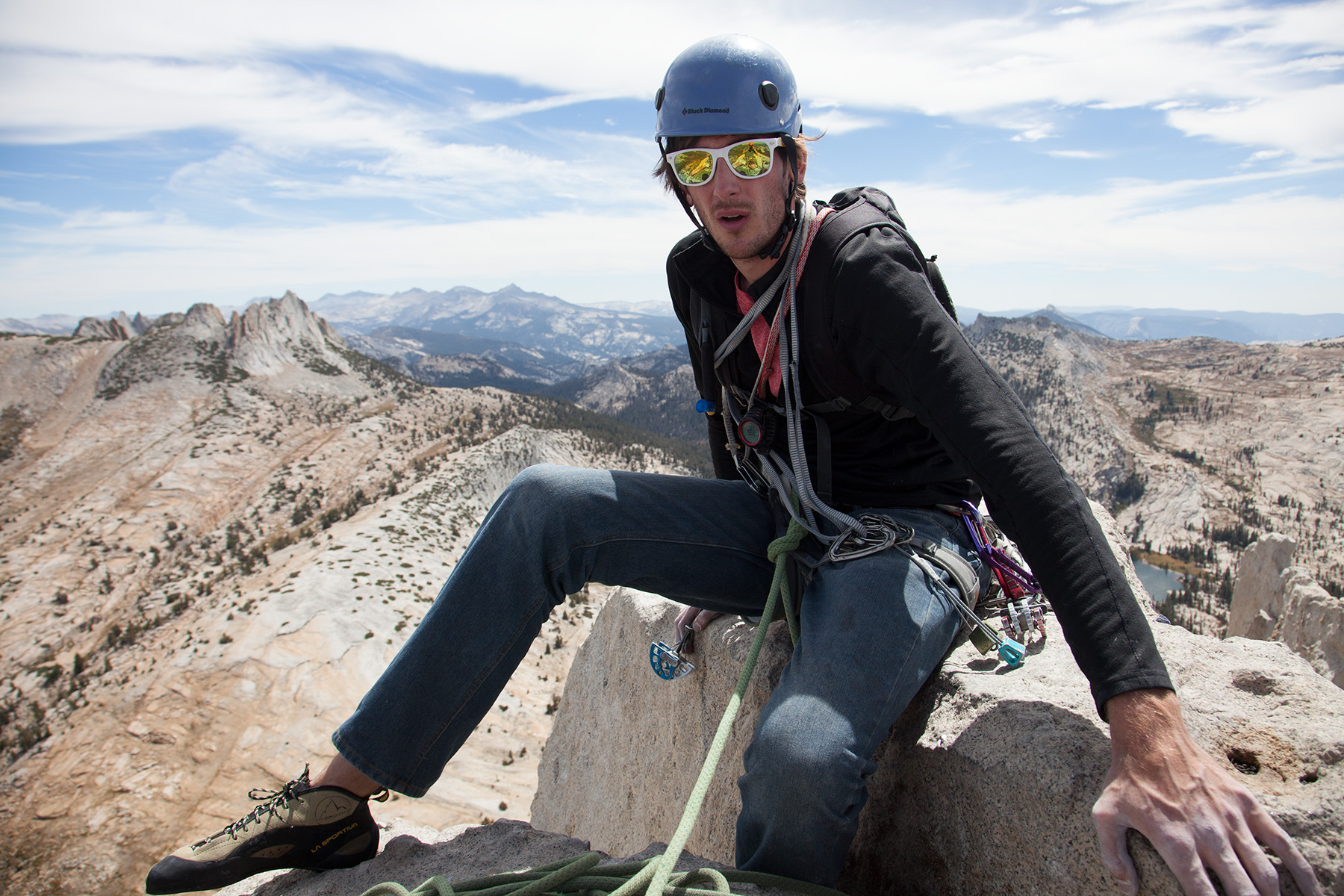For most climbers, a trip to Yosemite is something of a pilgrimage. It’s the birthplace of rock climbing in North America, after all.
The first time I laid eyes on Cathedral Peak was during my 2009 trip along the John Muir Trail. I remember dropping down from Cathedral Pass, about halfway through a 20 mile day, and wanting to puke from an altitude headache and severe chafing in my crotch. No exaggeration, I was absolutely miserable. But the peak stood out from the forest like, well, a cathedral. It was quite a sight, especially with the violet lupines in full bloom.
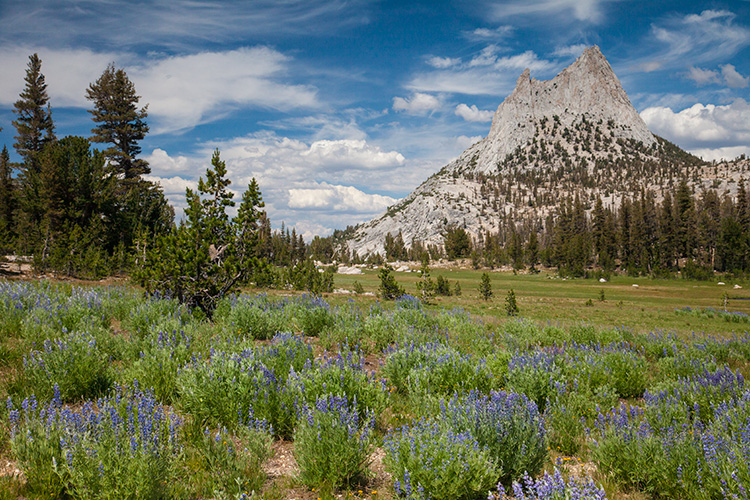
Fast forward a couple of years, and I’m learning the basics of multi-pitch trad climbing. The SE Buttress of Cathedral Peak, a Grade II 5.6 rated climb, begins to seem like a possibility. True, some brave folks cut their teeth on this sort of climb, but the rest of us have to build up to it. Multi-pitch climbing is very different than single-pitch, which is the sort of thing one might experience at a local cliff or a gym setting. In multi, climbers (usually in pairs) ascend the rock in pitches that are determined by rope length and the availability of natural belay stances, like ledges or trees. Once a team gets high on the rock, retreat can become difficult (sometimes, even impossible – nowhere to go but up). Weather is often unpredictable at altitude, and thunderstorms become a concern. On an alpine route, rockfall is a very serious reality, and the route itself is constantly changing with the seasons, as the freeze/thaw cycle slowly erodes the rock. In short, a long alpine climb needs to be treated with a bit more caution, because the consequences of a mistake, an accident, or unforeseen weather can be serious.
And now that I have your attention, allow me to reel things back a bit. This isn’t quite Russian roulette and my partner Joey and I do know what we are doing. This is arguably the most popular alpine climb in all of North America, and by my estimation, sees 1,000+ ascents each season. There have been a handful of fatalities in the last decade or two, but some climbers solo this route without a rope, up and down within a couple of hours. It’s a trade route, and doubtfully more risky than driving on Hwy. 395. The next time you run into Joey, ask him to recount his car-flipping story, it’s a doozy.
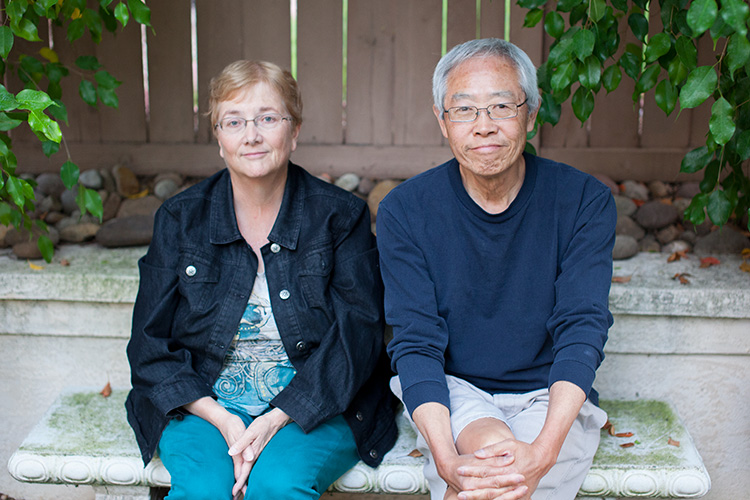
And one final note, before I move on to the trip report. My parents are awesome. Without their help, I wouldn’t be able to drive off on a Thursday afternoon and pursue silly endeavors such as a this, and I can’t begin to express my gratitude. I know they aren’t always thrilled with the places I go and the things that I do, but they have always supported me 100% and more importantly, made it possible for me to get away and chase my dreams. Cheesy, but true. Leading up to this trip, I spent a lot of time thinking about my family – Jasmine and Zane, and how much they mean to me. I always become a little sentimental and I tend to reflect on life before a big trip, and this was no exception. I am lucky to have such a wonderful family.

Back to the climbing. What is quickly turning into a ritual, Joey filled his growlers with Stone’s finest and I fired off a few Neapolitan pizzas. We packed into my Suburu and drove to the BLM land on the south shore of Mono Lake on Thursday night. We planned to leave at 4 am the next morning, which would theoretically put us on the rock by 7 am. I had the Supertopo guide and we weren’t sure which of the 3 “common” starts we would use, or if there would be time to summit Eichorn’s Pinnacle later that day.
Our first snafu; we started up the wrong trail. Well, not so much the wrong trail, but a mile away from the designated start. Seems like a silly mistake, but easy to do when it’s pitch dark outside. We realized what had happened by the time we backtracked back to my car, and this resulted in an hour of wasted time. Then, we started hiking through an active burn area, complete with smoke and ash, and it was a little eerie. Luckily, I am not very superstitious, otherwise I might have taken these as signs to go home. I won’t lie; the thought crossed my mind.
Dawn broke and we were well on our way up the trail to Cathedral. At some point, we lost the approach trail and started hiking cross country over the slabs and sparse forest, which was easy since Cathedral was now in view. I got a chance to photograph a very tame deer, who was foraging for his breakfast.
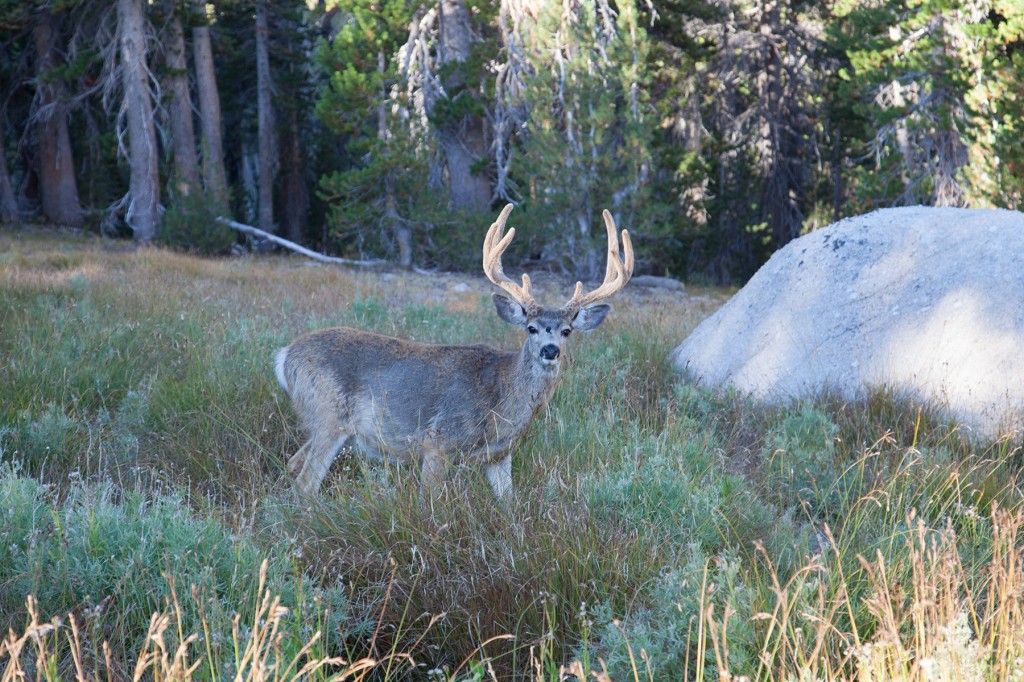
We picked our way up the slopes and Cathedral Peak now stood before us, looking very grand and just a little intimidating. We both remarked how similar the peak looked to Tahquitz, where we’ve climbed some long routes together. Those would prepare us for this day, no doubt.
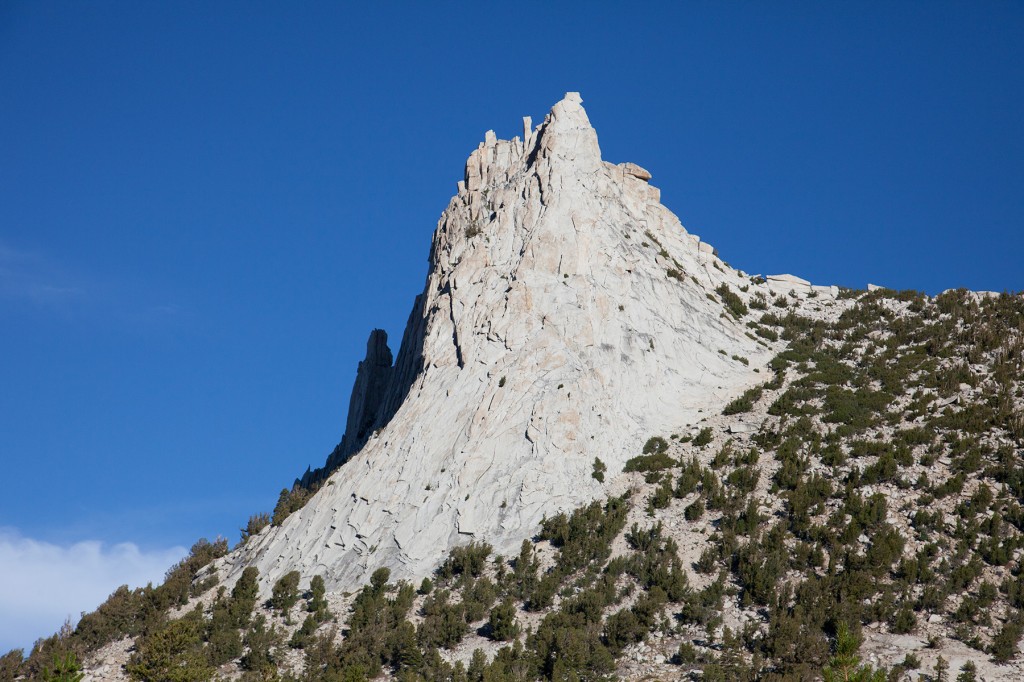
It’s funny, but whenever Joey and I climb these long routes together, we seem to carry each other when the going gets tough. The last time we climbed at Tahquitz, I was feeling strong and confident on the early pitches, and he was rattled. On this day, I took the first lead, and I was a nervous mess. We opted for the right-most “C” start as listed in the Supertopo, which starts with some mellow 5.3 climbing. I must have been off route from the get-go, because I found myself staring up at some harder climbing with little to no protection. I traversed and wandered around, more or less upwards, and eventually made it to a comfy belay ledge. I didn’t feel very confident at all, but Joey arrived at the belay with a big smile, and he seemed to enjoy the climbing.
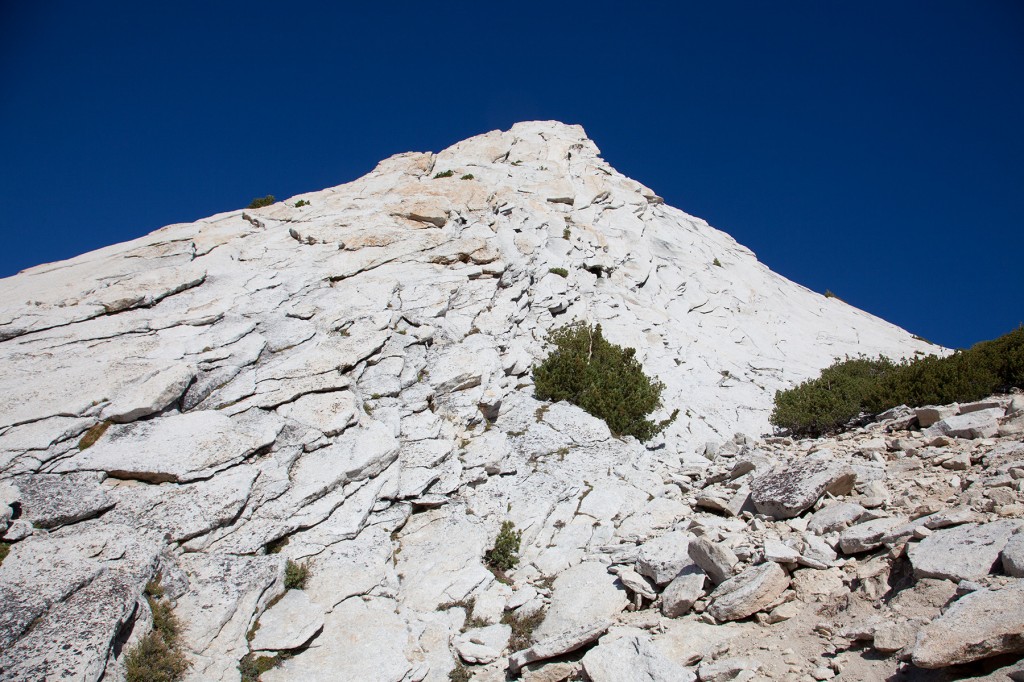

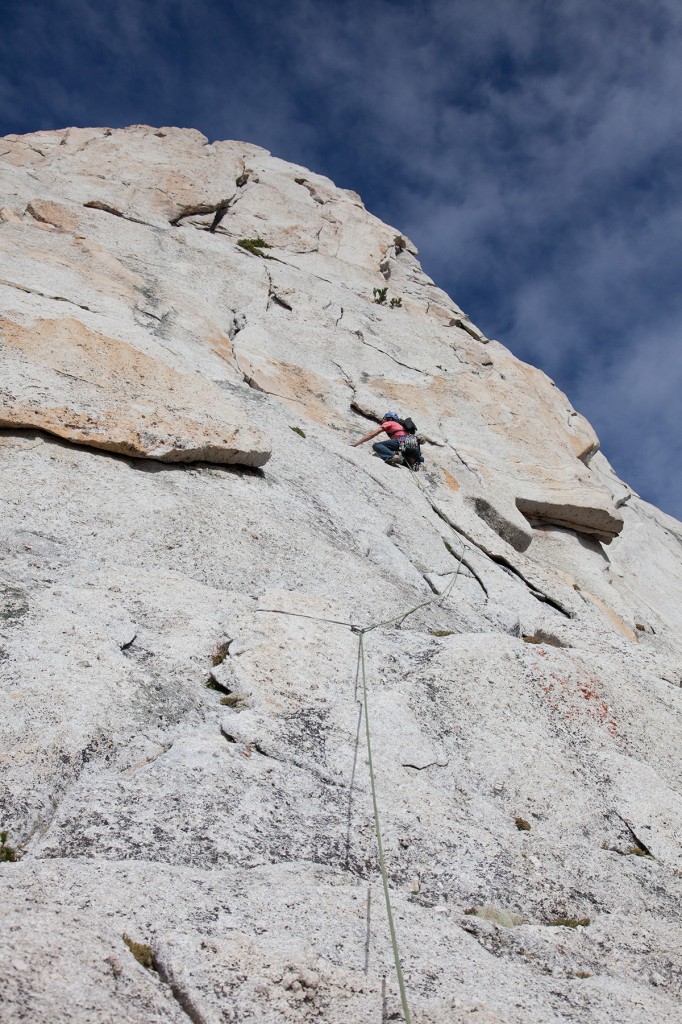
When you’re on route, it isn’t always easy to tell where to go. It’s not like there are signs pointing the way. You want to head up, of course, but that is no guarantee of safety or success. Generally speaking, the leader will follow a weakness in the rock, like a crack or a flake, placing protection at reasonable intervals to safeguard against a fall. One of my greatest fears when leading a long climb is getting off route. It’s happened to me a couple of times, and it’s always scary as hell. Most of the routes we’ve been doing follow the easiest way up the face, so if we happen to find ourselves off route, it means that we’re on harder terrain than planned. Sometimes, this means that protection is sparse or unavailable. Other times, it means that you’re hanging on by your fingertips, feeling the burning pump building in your arms, and forced to decide if you should continue up or retreat. I can’t speak for anyone else, but the focus and awareness during these moments is really intense. It’s unlike anything else in life, and I suppose it’s a bit addicting. I am not an adrenaline junkie by any means; flying on commercial aircraft makes me uncomfortable and I wouldn’t ride in a hot air balloon if you paid me. Yet, the intense focus I am able to achieve while climbing taps into a deep part of my brain, and it is very satisfying. I suppose it’s reaching that perfect, teetering balance point between the fight or flight response.
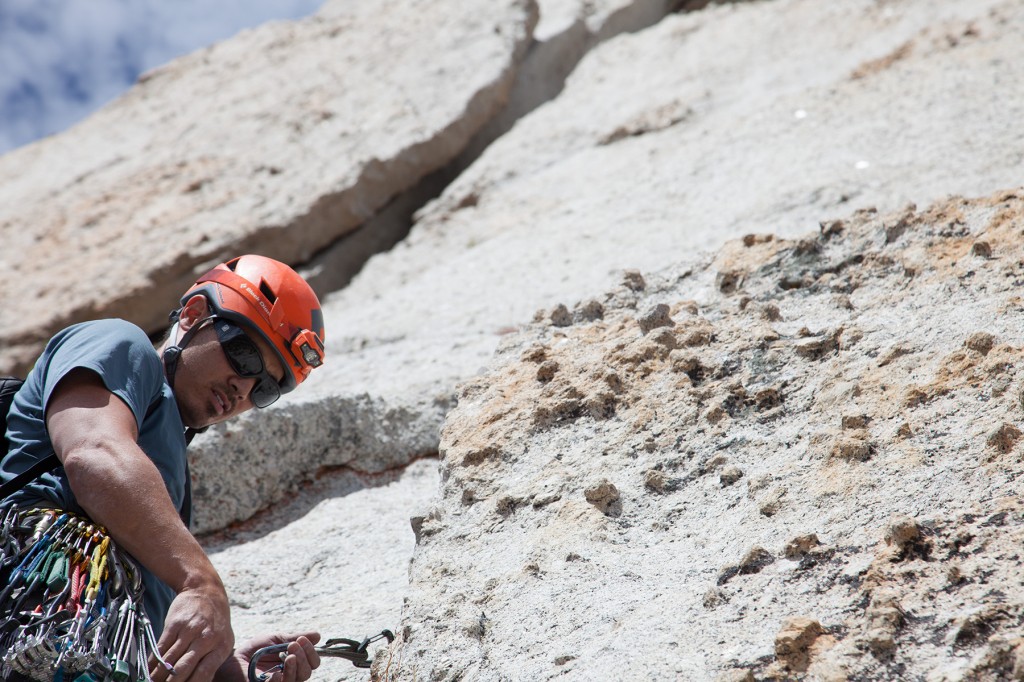
Joey has less trad experience than I, and I knew that he felt intimidated by the prospect of building a bunch of gear anchors. On our other climbs, we’ve usually stopped and belayed at trees, which make excellent anchor points. I wasn’t worried at all, and thankfully his anchors all looked really solid. We swung leads and used the rope to build all our anchors, which worked out great. I think we averaged about a pitch an hour, which is honestly pretty slow, but faster than our previous climbs. No need to rush things, just yet. The climbing was very mellow and I think we both felt really comfortable with the route. It never felt scary or hard, and even though we could hear other parties below us, no one ever caught up to us.
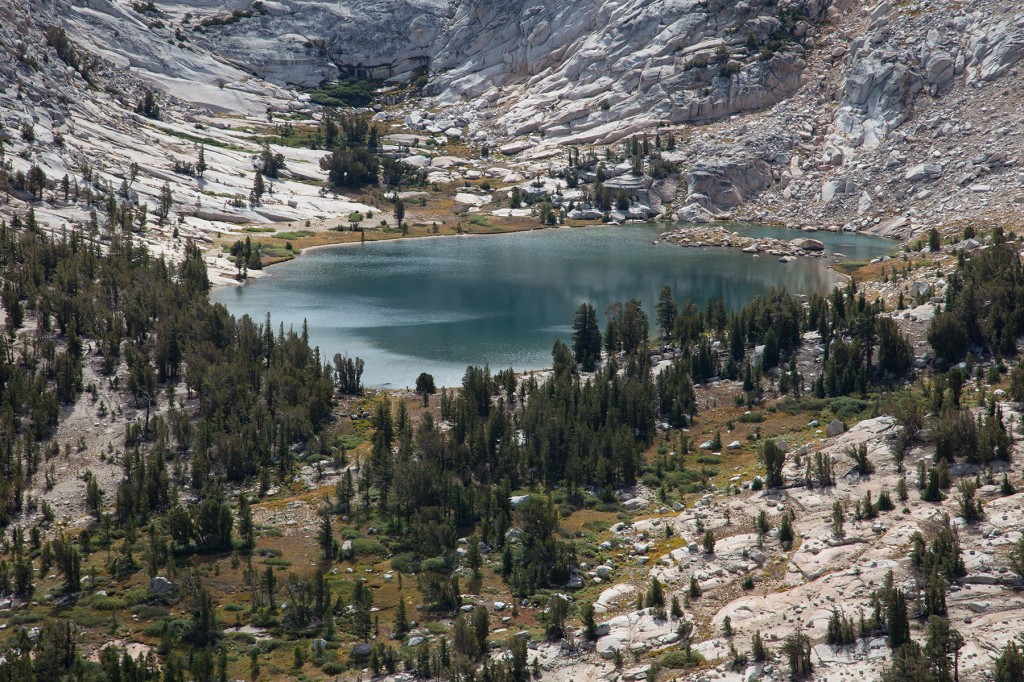
I felt stronger as the day progressed, and by the time we reached the chimney pitch (Joey’s lead), I was confident and excited to reach the summit. The weather was perfect, I still had a liter of water in my pack, and I knew that we would top this thing out. Joey, on the other hand, was starting to fry in the sun, and was running low on water. I could sense that the balance was shifting.

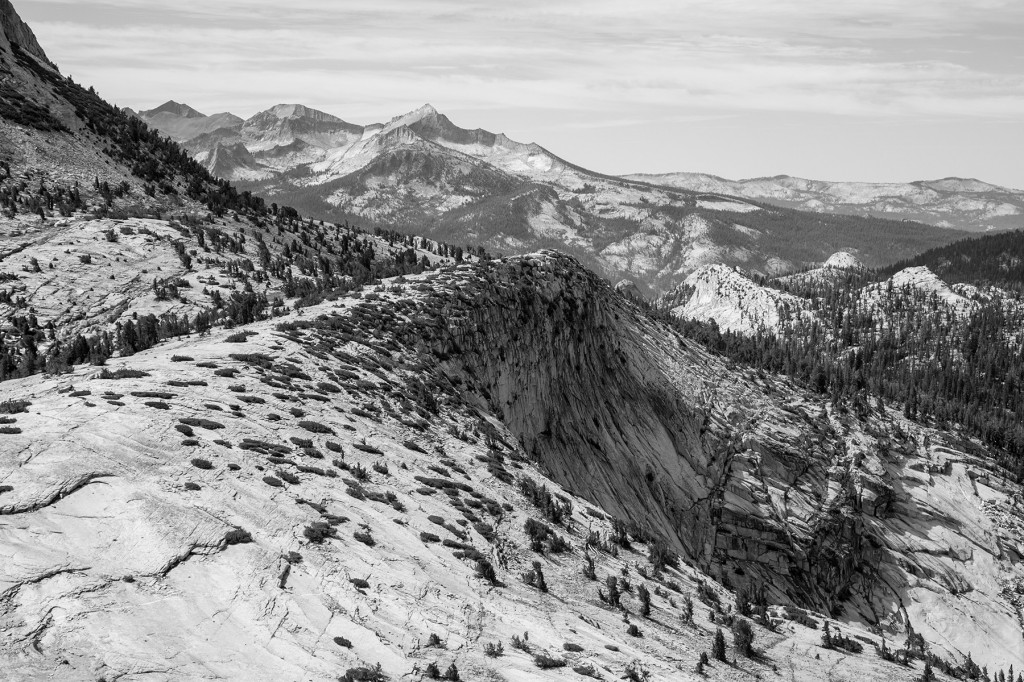
I led the 5th and supposed final pitch, but as I approached the headwall below the summit blocks, I realized that I was close to the end of the rope. Communication was still possible, and Joey yelled up that I had 15-20 feet of rope left (I think). That wouldn’t be enough, so I stopped and built a belay, somewhat disappointed that I wasn’t able to charge all the way to the top. I brought Joey up and he told that this was my climb – he generously gave me the chance to lead the 6th and final pitch to the summit. Awesome.
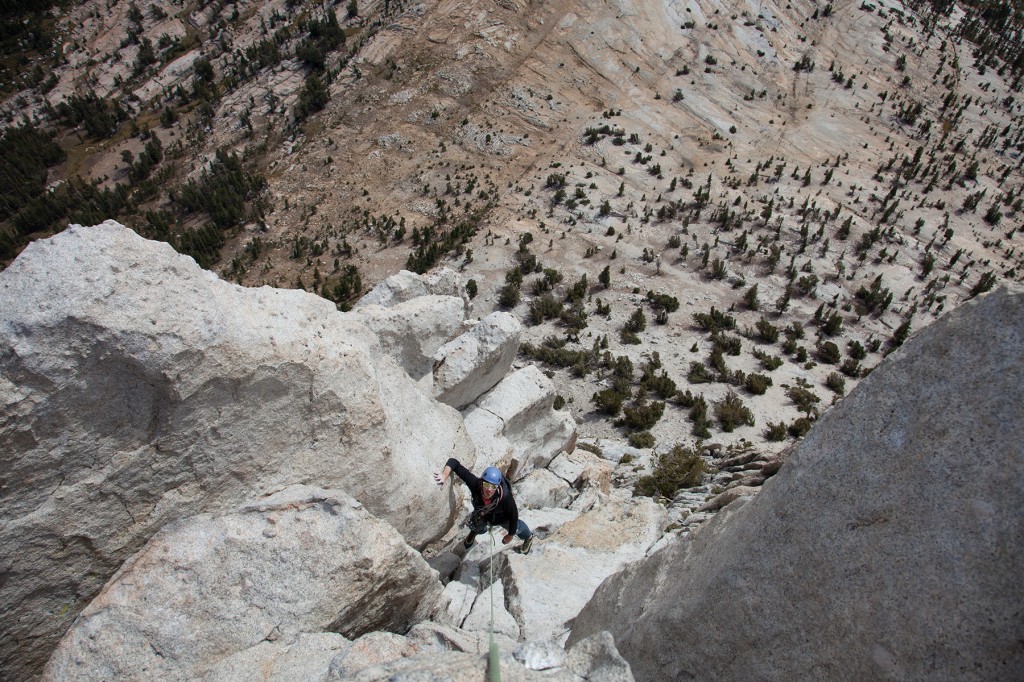
The summit was comprised of many giant, car-sized blocks that seemed to be stacked atop one another like a giant game of Jenga. They all looked stable enough, and the climbing was fun and easy. I topped out on the summit perch, about the size of a small dining room table, and placed a couple of cams in between two blocks to bring Joey up. He joined me shortly thereafter, and we were treated to a spectacular view of Tuolumne Meadows to the north, Half Dome to the west, and Echo Peaks/Matthes Crest to the southeast. I broke out a pizza, a bit smashed and soggy, and took a few bites (and photos).
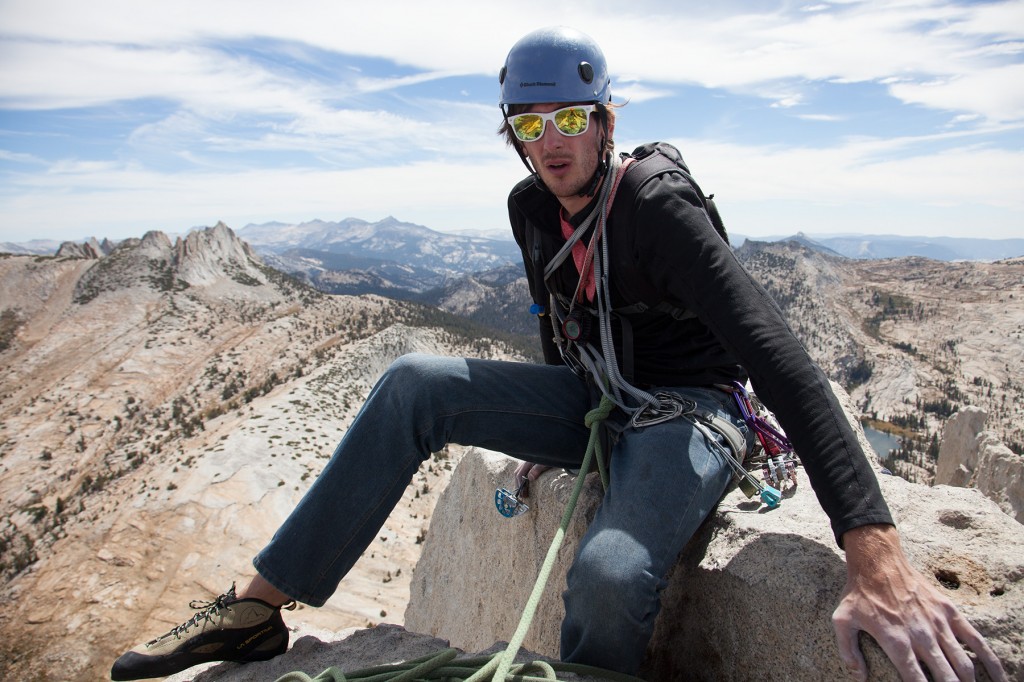
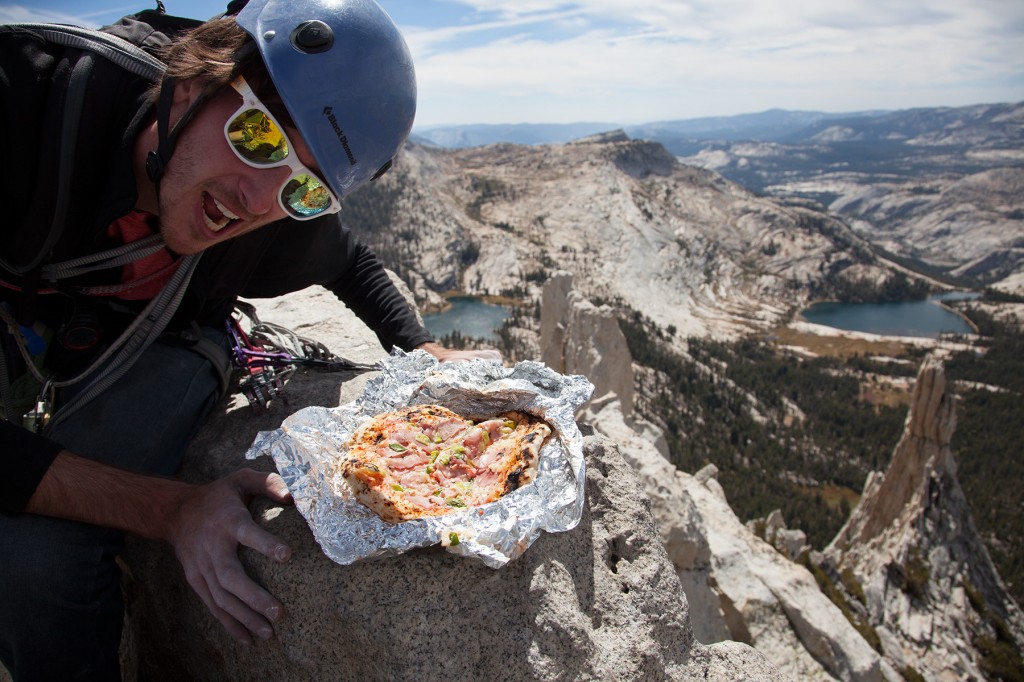
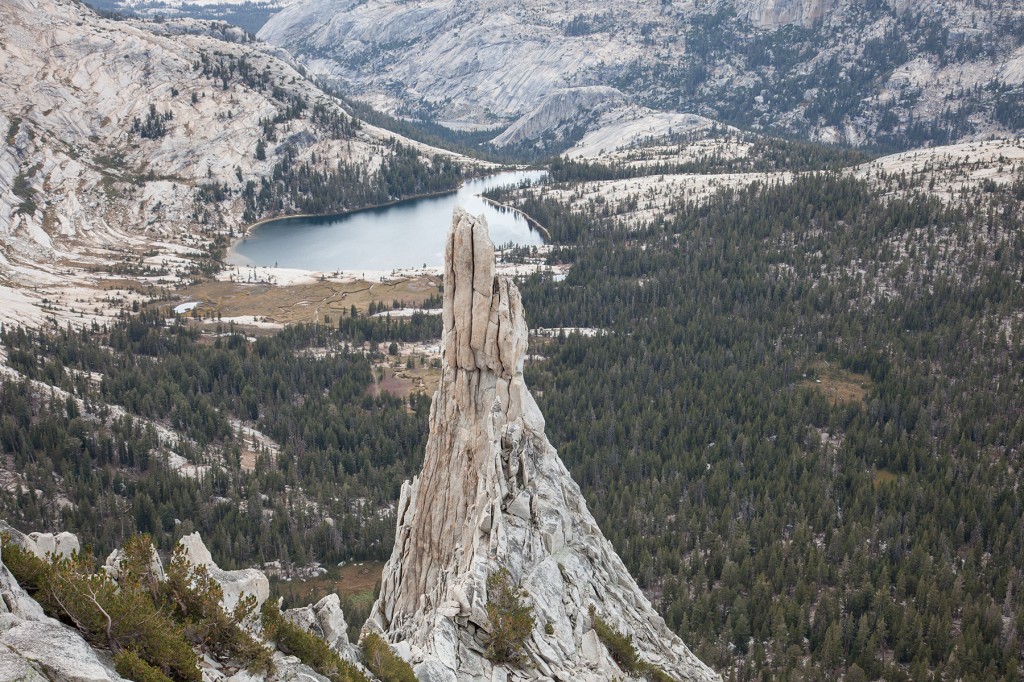
We made it to the top, but the adventure wasn’t quite over. Only one of us would receive a belay down from the summit, and it was only fair that it be Joey, since I got the lead. I belayed him off the summit blocks and over to a big ledge, about 20 feet down. I’ve read that this is 4th class downclimbing, but given the exposure and huge air beneath our feet, it felt a lot harder. Joey placed some gear on his way down, and then belayed me while I down-lead, a tactic that I have only used once before. It worked out great, and he placed enough gear that I felt pretty secure the entire time. We were both pretty tired, so we finished off the last of our water and ate the pizzas, and then descended off the backside of the mountain and onto easier terrain. The Supertopo mentions a 4th class descent across zig-zagging ledges, but we were too tired to deal with such sketchy nonsense. We rapped off a small tree and then a bit more easy downclimbing led us to solid ground.
Joey took a dip in ice-cold Tenaya Lake and then we refueled on some tasty burgers at the Whoa Nellie Deli in Lee Vining. The original plan was to climb Matthes Crest or Tenaya Peak the next day, but it was becoming clear that another early start was not in the cards. Having accomplished our chief objective, we were both so tired that all we wanted was a good night’s sleep. The next morning, we discussed our options and ultimately decided to do some easy cragging in Rock Creek (near Mammoth).
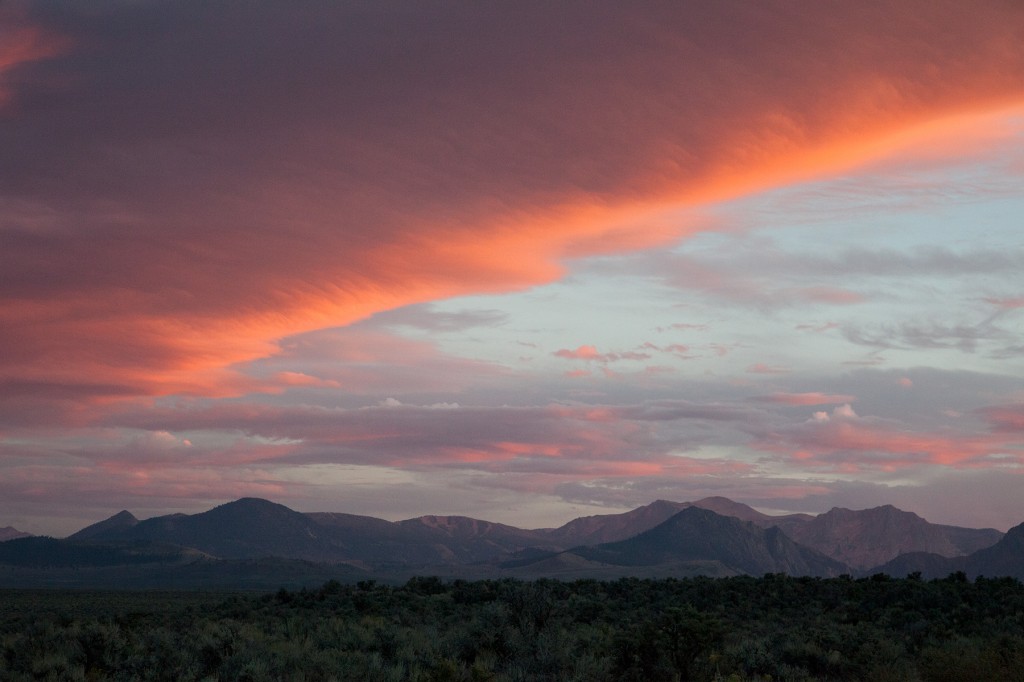
On Saturday, we drove south to Mammoth and ended up climbing at a really nice cliff called Patricia Bowl, near Rock Creek. Exceptionally clean granite rising 300 feet above a loose hillside, just west of the Rock Creek trail head. This is the same trail head where Ryan and I began our attempt at Bear Creek Spire in 2012 and my 2010 trip to Little Lakes Valley with Scott.
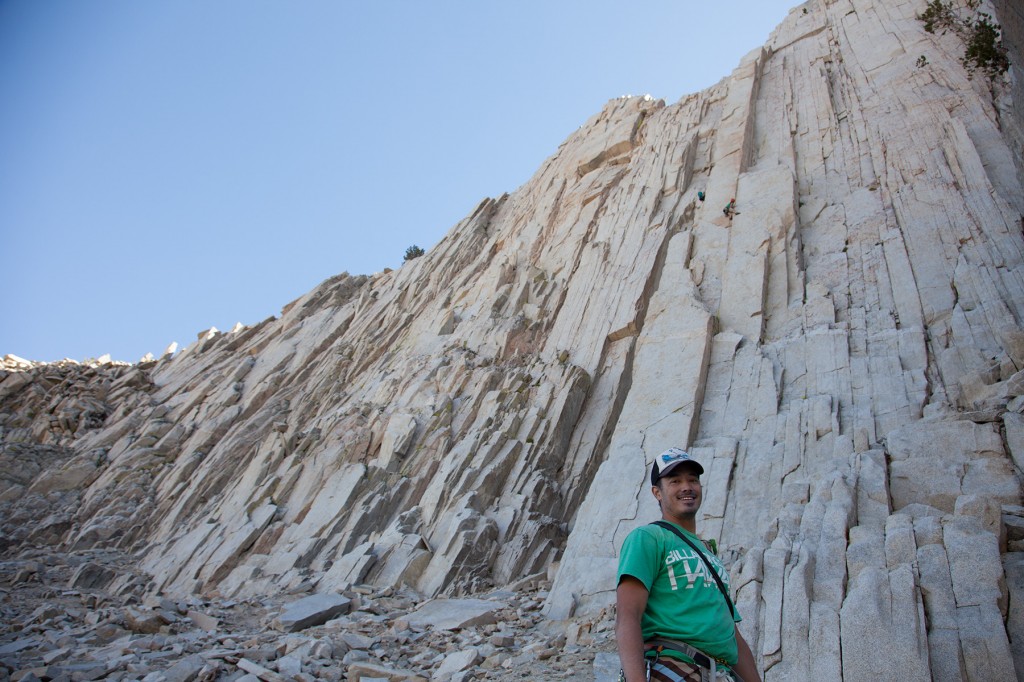
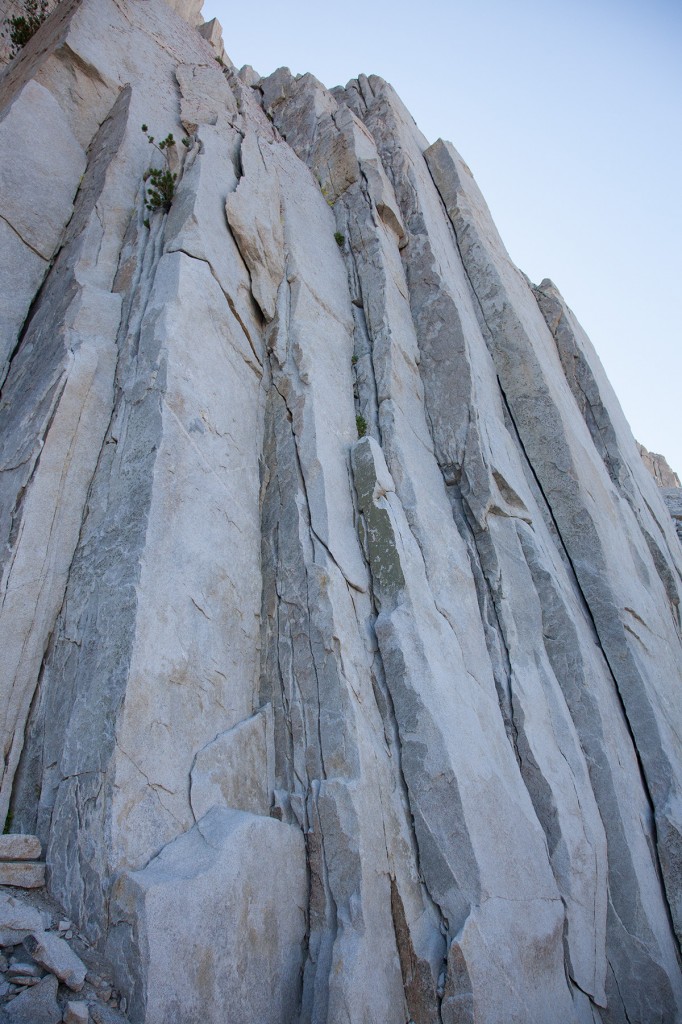
After the previous day, neither of us felt particularly strong or enthusiastic about climbing a hard line. We hiked out to the base of some excellent-looking crack climbs, and watched another party finish up on a beautiful thin-hands crack called Tommy Boy (5.10a). I stood at the base of this thing for a long time, trying to decide if I had the mettle to take it down. I did not. I ended up climbing an 85′ trad line called Faith +1 (5.7) which felt a lot harder than anything we faced on Cathedral, the day before. Joey followed and cleaned it, and after mucking about a bit, we decided to hike back to the car and make an early exit back to San Diego.
We’re saving Matthes Crest for next year, if all goes well.
